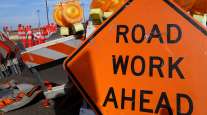Joint AASHTO, AAPA Report Calls for More Investment in Freight Infrastructure

In commemoration of the first anniversary of the FAST Act becoming law, the American Association of State Highway and Transportation Officials and the American Association of Port Authorities released their State of Freight II report Dec. 6.
The report calls for $258 billion in infrastructure investment on top of last year’s $29 billion, bringing the request to $287 billion over 10 years just to keep pace with rising freight volumes and increasing population density in metropolitan areas. And this year’s $258 billion only covered requests from 18 states which have 36% of the nation’s population so that number will soar in 2017.
On a conference call with reporters, AAPA President Kurt Nagle called the FAST Act “a positive step,” with the federal government finally recognizing the importance of freight movement. However, the report noted that, “the promise of a 21st century freight network has yet to be fulfilled.”
AASHTO President David Bernhardt, Maine’s DOT Commissioner, added that while “transportation matters more today than ever with total logistics costs of $1.45 trillion … the public [does] take it for granted.”
Trucking was an afterthought in the report, but when asked about that, AASHTO Executive Director Bud Wright acknowledged the industry’s primacy in freight movement.
“This report demonstrates that while state transportation departments are making progress, improvements to critical freight infrastructure have not kept pace with current and future demands,” Wright said. “A lot of what the state departments of transportation have identified as needs will relate to trucking corridors, eliminating congestion and bottlenecks.”
Thirty-seven states have put together freight plans as required by the FAST Act. While only Arkansas, Florida, Louisiana, Nebraska, New York and Texas had their plans approved by the U.S. Department of Transportation, the rest must do so by December 2017. Twenty-nine states representing 56% of the population listed 6,202 projects, a majority of them highway-related, in their freight plans.
“We encourage lawmakers to provide additional and ongoing funding resources outside of the Highway Trust Fund,” Wright said. “We do think there is a role for [public-private partnerships] … but the private sector will [only] get involved if there’s a return on investment … and that isn’t necessarily going to work for all of the infrastructure investment needs that we see around the country.”
AASHTO and AAPA also called for the re-establishment of an office of multimodal freight transportation within U.S. DOT and moving the harbor maintenance tax from discretionary to mandatory spending.
According to the joint report, states “are going to be the key building blocks for the national freight network and defining the baseline investments that need to be made. In a dynamic environment, states and ports will need the tools and flexibility to adapt to new trade patterns in order to accommodate anticipated freight volumes.”
The FAST Act also created a federal freight program worth more than $11 billion over five years. More than half of that money is in the new National Highway Freight Program, including $4.5 billion worth of FASTLANE grants. Forty-three of the 50 states have applied for those allocations from U.S. DOT. Within the program’s first four months, $800 million was released.
The AASHTO/AAPA report said, “State DOTs are critical partners in freight movement, particularly with respect to intermodal connectors and corridors that facilitate the transfer of cargo between ports and inland points. Thirty-eight of the 50 states and Washington, D.C., are connected by navigable waterways and marine highway routes. For the first time, the FAST Act has brought ports and freight fully into the surface transportation network.”
Last year, container traffic at U.S. ports set a record with nearly 47.7 million containers, a 14% increase over the past decade, according to AAPA, in part because of the development of today’s 18,000 TEU mega-ships.
At the same time, an estimated 18 billion tons of non-containerized cargo are shipped through inland states. The report noted that energy commodities accounted for 54.2% of the 1.4 billion tons of foreign trade cargo handled at U.S. ports in 2014. In North Dakota, the energy boom prompted a 565% increase in truck traffic from 2006-12 even though those commercial vehicles are forced to use a rural, two-lane highway. That’s another example of the need for improved infrastructure.


